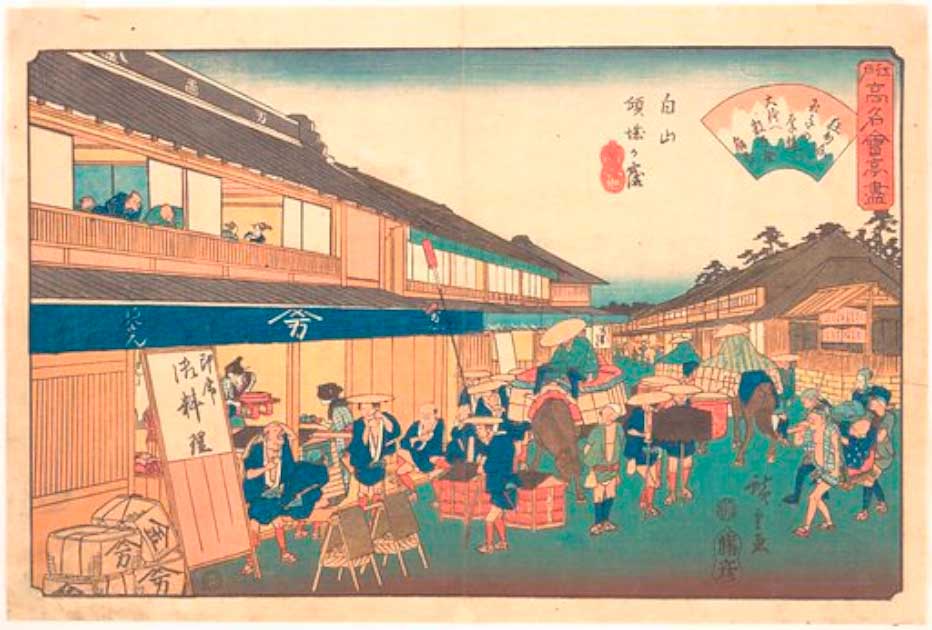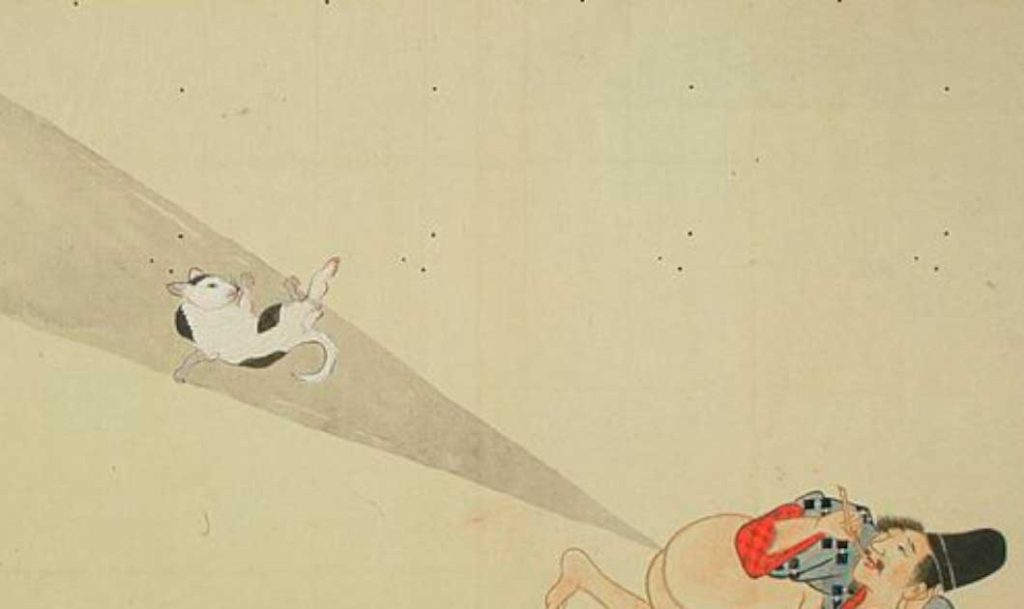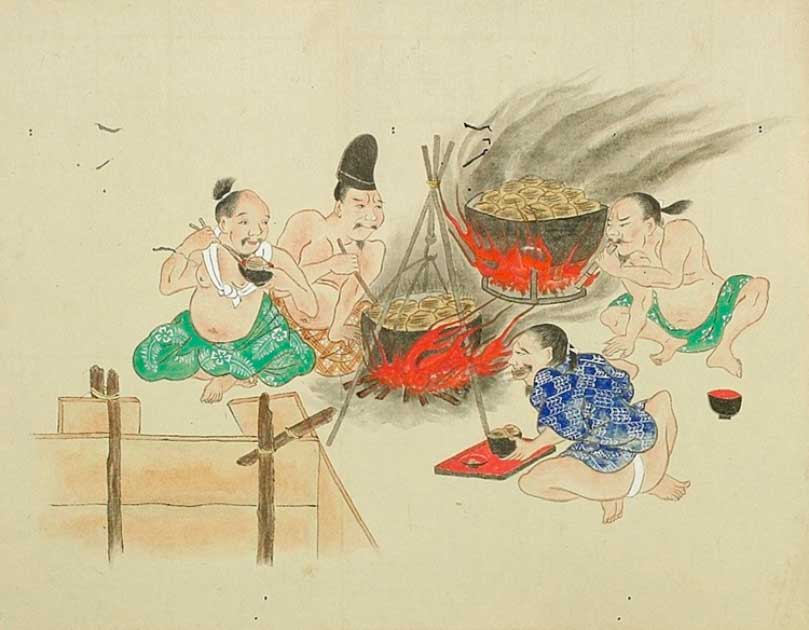Natural or not, flatulence can be quite embarrassing. When someone farts in the elevator or in a room full of people, everyone would definitely look at the person accusingly. However, this is not always the case, and in Edo-period Japan they became something awesome.
That’s right: fart battles! Not only was flatulence rewarded, it became the basis for competitive play in battles known as He-gassen.
He-gassen is also the name of a Japanese scroll that was made nearly a hundred and seventy years ago. According to research, it would have been created during the mid-1800s in the Edo period of Japan.
The Japanese scroll could have been easily forgotten, hidden in a museum or locked in an archive. However, thanks to the internet, the scroll was popularized and made available online for everyone to see.
The scroll consists of nearly 15 scenes in which people are seen farting directly at other individuals, or in some cases at objects. In the scroll, mostly nude characters engaged in serious fart battles. The artists of the He-gassen scrolls are still unknown, but the fart battles were known to be quite popular in the seventeenth to the nineteenth century.
He-gassen: Battle of the Farts
The existence of the Japanese scroll, He-gassen, that dates back to nearly 200 years ago: proof that toilet humor is funny no matter what the setting. In the Japanese period of isolation between 1603 to 1868, stability and peace prevailed.

However, it was a pleasure-seeking era in which sophisticated individuals engaged in patronizing theatre and poetry. At that time, a counter-culture had also developed in which men and women engaged in the battle of farts. Some assume that the culture was intended to sustain the Japanese tradition of the popular samurai warriors, robbed of the chance to prove themselves on the battlefield.
- The Tobacco Enema: Blowing Smoke Up Your Backside?
- Dental Horrors! The Bizarre Cases of Exploding Teeth
In the images of the He-gassen scroll, it can be seen that men, as well as women, engage in the fart battle. People bend over and unleash monumental and powerful farts.
The farts, represented as shaded cones in the images, were aimed at other men, animals, and even tree trunks. In the battle of wind, the participants tried to knock others off their feet and caused the people to cover their nasal passages as a reaction of utter repulsion. It was indeed a battle of powerful, dangerous, and extremely noxious farts.
In the He-gassen scroll, it shows that the fart battle starts with men consuming a lot of food that is likely to induce gas. Then the men would launch directed farts on other human beings.
Some even trapped their farts in a bag and later released them together during the fart battle. The farts were so powerful that they even had the potential of making a hole in the wall. They could also blow away animals like cats.
However, the opponents were not defenseless: well-timed fans could be used to deflect the farts. The whole battle of farting seemed to be vulgar yet delightful for people.
A Deeper Meaning
Many people believe that there is a deeper meaning to the fart wars. The bizarre act might have been used in a comical manner in order to shed light on contemporary politics. It is possible that the gas could be used as a metaphor.
The farts could also be used by the artists in order to depict disdain for the rising influence of Europe on Japan. It made fun of the westerners’ influence on the country and shows the response of the Japanese people towards the westerners who intruded Japan during the Edo period.

It could depict that westerners were being blown away to their homes by the unpleasant wind. The images were probably meant to ridicule these unwelcome foreign interlopers. According to one of the theories, the fart could also be a social jab at the anti-foreigner sentiment.
- The Sakoku Edict: Why did Japan Isolate Herself for over 200 Years?
- What Caused the Pink Poop Pandemic?
In the much older traditions, farts were also used in order to gain an advantage in military battles. As per the historian Herodotus, there are several (possibly exaggerated) stories in which farts were used to kill as many as 10,000 of the enemy.
Farts in the Modern Age
In the year 2009, the students of Cornell University decided to find out the velocity of farts. In order to do so, they thankfully used face masks.
They first created a fart intensity detector. The detector would be used to rank the powerful wind on a 0 to 9 scale. The ranking would mainly be done in terms of temperature, sound, and gas concentrations.
The students of Cornwell University found out that hydrogen sulfide was the main element present in the most “aromatic” farts. In warmer temperature conditions, the gas moved faster. Some of the food items that produce hydrogen sulfide include meat, eggs, fish, broccoli, beans, cabbage, cauliflower, and beer.

The He-gassen scroll has also been brought into the modern era, digitalized by the Waseda University Library in Japan. It is viewable online and captures the entire Japanese scroll. A number of such scrolls have been sold in auctions for over 1,500 US dollars. It may seem to be a small price for such memorable pieces of art.
The scroll available at the Waseda University starts with a scene in which men of different ranks are seen to be spreading the news about the farting contest. The men are also seen carrying various food that would cause flatulence. A cooking scene is also present in which they are preparing and eating food in order to be ready for the fart battle. The scroll ends with a colophon or brief information relating to the publication of the work.
Many still wonder whether the fart battles were real or just imaginary. Waseda University was actually founded in the year 1882. It was nearly fourteen years after the end of the Edo period. So, it is believed that the university would have verified the authenticity of the He-gassen scroll before digitalizing it.
Top Image: Certainly one way to assert dominance: Japanese fart battle from the He-gassen scroll. Source: Unknown Author / Public Domain.
By Bipin Dimri